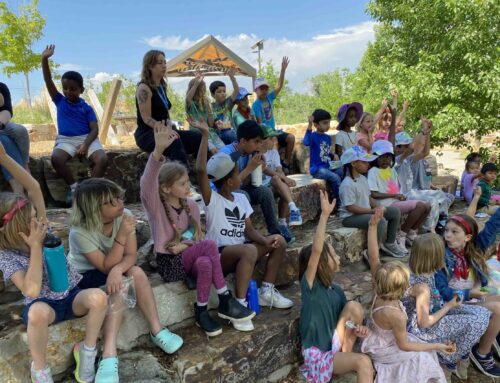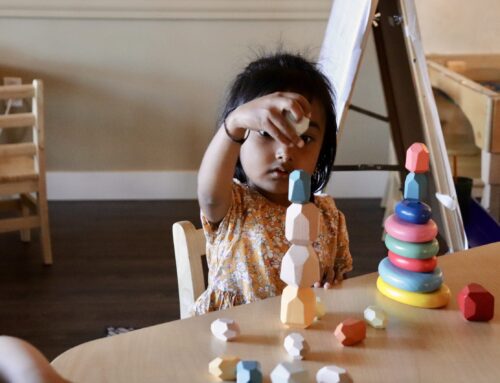This past month I had the opportunity to facilitate a workshop for 30 early childhood educators in Denver titled: Playing with Diverse Picture Books. We met for two hours and shared books, provocations, activities, and takeaways after reading The Proudest Blue by Ibtihaj Muhammad and S.K. Ali with illustrations by Hatem Aly, Another by Christian Robinson, and I Talk Like a River by Jordan Scott with pictures by Sydney Smith. We’ll meet again in a month to explore three new texts but for this round of books, we focused on activities we could do before and after reading these books with the kiddos in our classrooms.
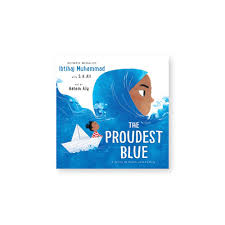

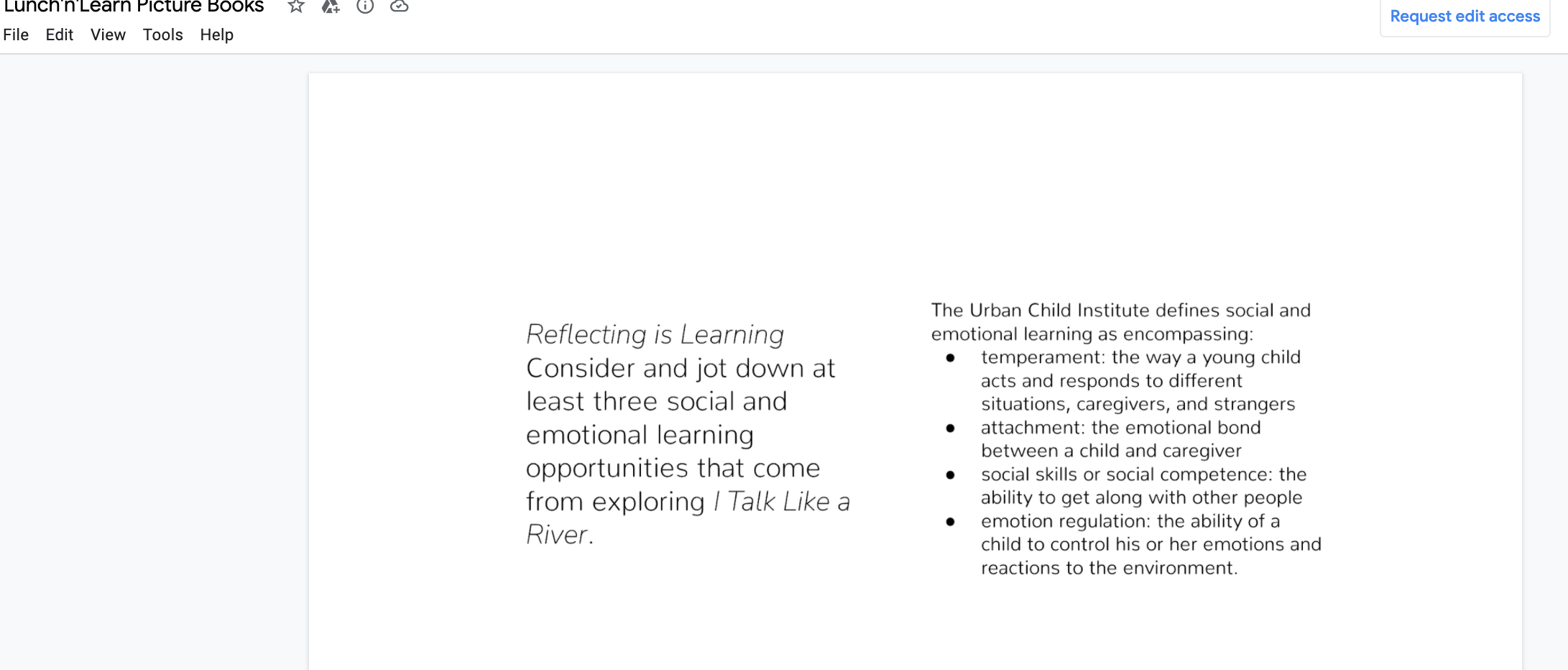
These books each highlight a different aspect of intersectional diversity for kiddos. In this session we focused on discussing race, gender, religion and ability with little ones. It is much like a series of sessions I created for our teachers at the start of the year as we worked to build an inclusive and welcoming learning environment for our kiddos at school. It’s work that we are passionate about doing every day.
During the workshop with educators I was excited by the enthusiasm for these books and found myself thinking about the ways in which I could connect this learning with our families at Compositive. To that end, we just finished a Lunch’n’Learn gathering with parents where we explored two of these books and the work we can do with them at home — as one parent pointed out, often just before bed. Every day is full of opportunities for you to discuss and examine differences with your children, but I believe that books and media provide a particular opportunity for representation and exploration. We are doing that work at school and your continuation of it at home will help your little ones to become global citizens who care and connect with others who are similar and different from them every day.
I know that every time you get into a book, no matter how exciting or challenging its topic or theme may be, it can’t be a whole production. I know that books often come right before sleep for little ones and I want to honor that time by making it as interactive, meaningful, and memorable as possible. To that end, I’ve put together a few tips for parents to consider when bringing a book to a bedtime routine. Or really any part of your daily routine. I invite you to try these out and to find the combination that works best for your family and the particular book you are bringing into the conversation.
-
Begin by choosing books thoughtfully. I encourage you to consider these three questions when you engage with a new book: Does this book represent or challenge my child’s experiences of the world? Does this book create opportunities for critical thinking and multi-modal discussion? Does this book inspire a sense of wonder or reflection or imagination?
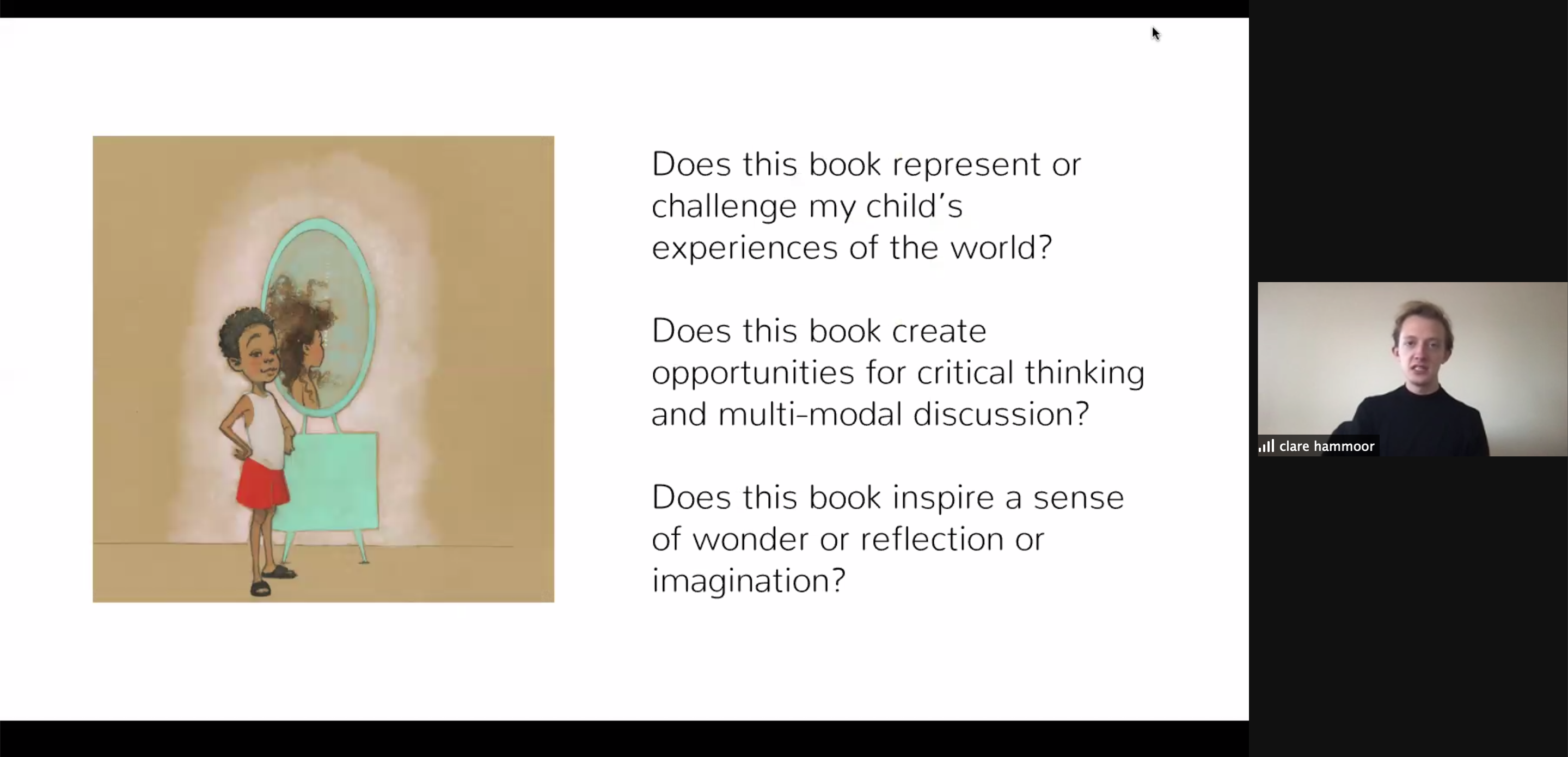
-
Realize that there is no need to finish an entire book before bed. Finishing a book is not the goal of reading a book. Pause. Take time to discuss and develop understandings. Think and wonder. Meander in the illustrations and talk about the story as you read it. Reading for understanding is a skill that takes practice. The first step is teaching kiddos how to build an enjoyable practice of reading.
-
As you pause to ask questions about the story, incorporate the visual literacy of illustrations into your discussion. Relate the story to your life and the life of your child. Make predictions and then follow-up after learning more. Ask questions that you don’t know the answers to. Encourage your child to do the same.
-
Put on some tunes when you’re reading. You could use this to set the mood for the story. You could also use this to create a more focused environment. You could even choose music based on the length of time you want to read — when the song(s) are over, so is time with the book. I’d recommend acoustic or even modern classical. Philip Glass is always a wonderful companion. So is Dustin O’Halloran. Music sets a tone and can elevate even the simplest story through emotion.
-
Be passionate about reading. Don’t let your child see reading as a chore. It’s a joyful wonderland. Even the books that make us well up with tears or become outraged have transformed us because we were open to them. A love of reading, knowledge, and discovery will open up lifelong opportunities for your kiddo.
These tips are useful for any books but particularly ones which share representation of your family or challenge your child to see other people, places, and ideas in the world. We are all working to become better global citizens. We are all working to become more compassionate people. The work we do now will help children bring about a more caring and diverse world. It’s not totally accomplished through books; they can sure help us start.



